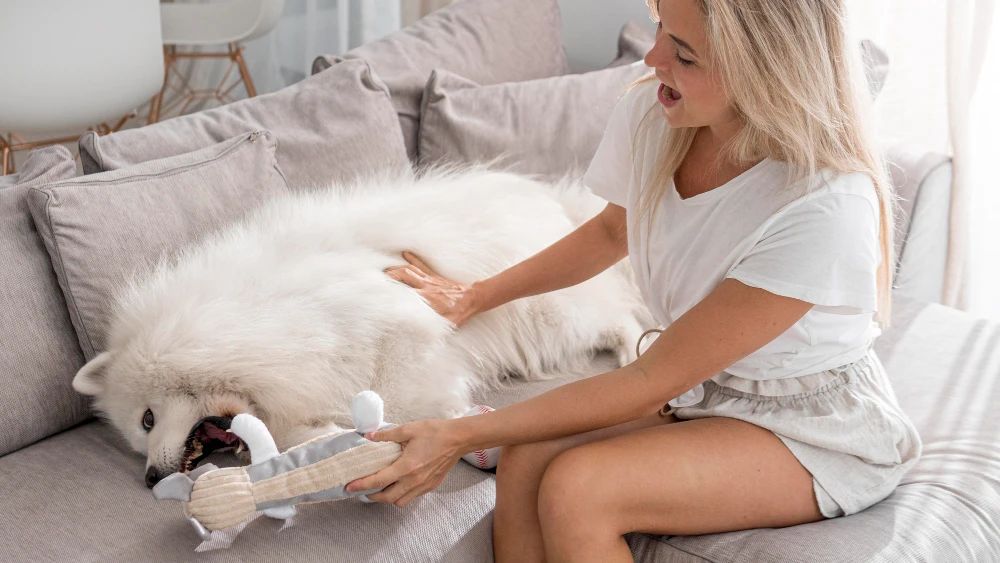If you’ve ever found yourself asking, “Why does my dog constantly lick his paws?”, you’re not alone. This common canine behavior can range from harmless grooming to a sign of serious health issues. As a loving pet owner, it’s important to understand the reasons behind this habit and when it might be time to consult your vet.
In this guide, we’ll explore the most common causes of excessive paw licking, how to identify the underlying issue, and what you can do to help your furry friend find relief. No matter if it’s allergies, anxiety, or something more serious, we’ll cover everything you need to know to keep your dog happy and healthy.
Understanding Normal vs. Excessive Paw Licking
All dogs lick their paws occasionally as part of their natural grooming routine. A quick clean after a walk or a brief nibble between the toes is usually nothing to worry about. However, when paw licking becomes constant, obsessive, or leads to redness, sores, or hair loss, it’s a sign that something deeper may be going on. If you’ve noticed your dog spending long periods focused on his paws—especially if he seems agitated or uncomfortable—it’s time to investigate. The key is to observe how often, how intensely, and under what circumstances the licking occurs. Does it happen mostly after meals? At night? After walks? These clues can help pinpoint the cause.


7 Reasons Why My Dog Constantly Licks His Paws?
1. Allergies (The Most Common Culprit)
Just like humans, dogs can suffer from allergies that make their skin itchy and irritated. There are two main types of allergies that lead to paw licking:
- Environmental Allergies (Atopic Dermatitis): Pollen, dust mites, mold, and grass can trigger allergic reactions. Dogs often lick their paws to soothe the itch, especially after being outside.
- Food Allergies: Certain proteins (like chicken, beef, or wheat) can cause allergic reactions. Unlike humans, dogs with food allergies usually show symptoms through their skin rather than digestive issues.
What to Look For:
- Red, inflamed paws
- Chewing at the base of the nails
- Recurring ear infections (a common secondary symptom)
2. Yeast or Bacterial Infections
Dogs’ paws are warm and moist—the perfect environment for yeast and bacteria to grow. If your dog constantly licks his paws, a fungal or bacterial infection could be to blame.
Signs of an Infection:
- A musty, cheesy odor (common with yeast)
- Brownish-red staining between toes
- Crusty or oozing skin
3. Dry or Irritated Skin
Harsh weather, frequent washing, or walking on salted sidewalks in winter can dry out your dog’s paw pads, leading to cracking and discomfort.
How to Help:
- Use a pet-safe paw balm
- Rinse paws after walks (especially in winter)
- Avoid harsh soaps when bathing
4. Pain or Discomfort
Sometimes, paw licking isn’t about itchiness—it’s about pain. Conditions like arthritis, joint issues, or even a hidden splinter can cause your dog to focus on his paws.
Red Flags:
- Limping or favoring one paw
- Swelling or heat in the affected area
- Licking focused on a single paw
5. Anxiety or Boredom
Dogs often lick their paws as a self-soothing behavior when they’re stressed, bored, or dealing with separation anxiety.
Common Triggers:
- Loud noises (thunderstorms, fireworks)
- Changes in routine (moving, new pets)
- Lack of mental stimulation
6. Fleas or Mites
Even if you don’t see fleas, their bites (or microscopic mites) can cause intense itching, especially between the toes.
What to Check For:
- Tiny black specks (flea dirt)
- Scabbing or hair loss
- Excessive scratching elsewhere on the body
7. Hormonal Imbalances
Less common but still possible, conditions like hypothyroidism or Cushing’s disease can lead to skin problems and excessive licking.
When to Suspect This:
- Weight gain or loss
- Thinning fur
- Increased thirst and urination

What to Do If Your Dog Won’t Stop Licking His Paws
If you’ve noticed your dog constantly licking his paws, here’s a step-by-step approach to finding relief:
1. Inspect the Paws Carefully
- Look for cuts, splinters, or foreign objects (like foxtails).
- Check for redness, swelling, or unusual odors.
2. Try an Elimination Diet (If Food Allergies Are Suspected)
- Switch to a limited-ingredient diet for 8-12 weeks.
- Common allergens to avoid: chicken, beef, wheat, soy.
3. Keep Paws Clean & Moisturized
- Rinse paws after walks to remove allergens.
- Apply a natural paw balm to prevent cracking.
4. Use an E-Collar (Temporarily)
If licking is causing wounds, a cone or soft e-collar can prevent further damage while healing.
5. Increase Mental & Physical Stimulation
- More walks, puzzle toys, or training sessions to reduce anxiety-related licking.
6. Visit the Vet If Symptoms Persist
- Your vet can perform skin scrapings, allergy tests, or blood work to rule out infections or hormonal issues.
When to See a Vet Immediately
While some paw licking is normal, seek veterinary care if you notice:
✔ Open sores or bleeding
✔ Swelling or pus
✔ Limping or reluctance to walk
✔ Excessive licking that disrupts sleep
Final Thoughts: Helping Your Dog Find Relief
If you’ve been wondering, “Why does my dog constantly lick his paws?”, the answer could range from simple allergies to more serious health concerns. The key is to observe patterns, try at-home remedies for mild cases, and consult your vet if the behavior persists. With patience and the right approach, you can help your dog kick the habit and keep his paws healthy. Have you dealt with this issue before? Share your experience in the comments—your story might help another pet owner

